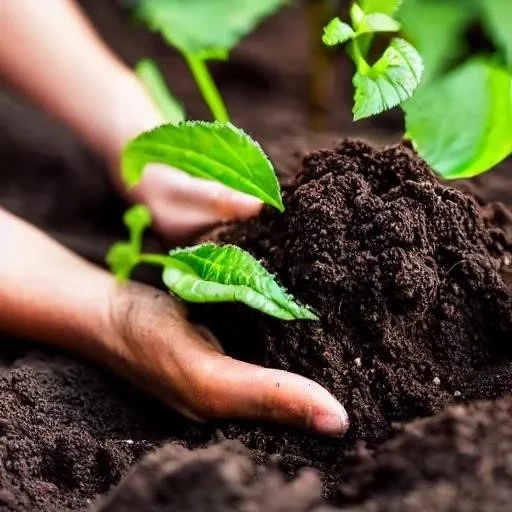Today is 10/02/2025 10:05:14 ()
As the vibrant hues of early spring begin to mellow‚ a crucial window of opportunity emerges for every discerning gardener: late spring․ This period‚ often overlooked in the flurry of initial planting‚ is in fact the linchpin for a season of unparalleled growth and bountiful harvests․ Far from a mere transition‚ late spring offers a strategic moment to solidify your garden’s foundation‚ ensuring resilience and productivity that will extend gloriously into the summer and beyond․ By meticulously implementing targeted strategies during these pivotal weeks‚ gardeners can transform their plots from simply productive to truly extraordinary‚ cultivating a thriving ecosystem that yields an endless array of fresh produce and breathtaking blooms․
Embracing late spring with informed enthusiasm can dramatically elevate your gardening success‚ moving beyond conventional approaches to harness the season’s full potential․ It’s a time for smart choices‚ from selecting robust varieties to optimizing soil health‚ all contributing to a more sustainable and rewarding cultivation experience․ For instance‚ while many focus on early crops‚ late spring is prime for planting robust leafy greens like kale‚ collards‚ and lettuce‚ which will flourish as temperatures stabilize․ Furthermore‚ introducing unique‚ high-yield plants such as Chufa‚ a remarkable nut-like tuber tasting just like almonds and multiplying profusely‚ can significantly diversify your harvest․ Similarly‚ certain types of summer squash‚ notably the resilient Homs Kousa variety‚ become incredibly productive during this phase‚ ensuring a steady supply until the season’s final frost․ These strategic choices‚ coupled with expert techniques‚ are what separate a good garden from a truly exceptional one․
| Category | Recommendation | Details/Benefit |
|---|---|---|
| Recommended Plantings | Leafy Greens‚ Chufa‚ Summer Squash | Kale‚ collards‚ lettuce‚ arugula‚ radishes‚ chard‚ and spinach thrive․ Chufa offers almond-like tubers that multiply heavily․ Homs Kousa summer squash is remarkably productive․ |
| Season Extension Techniques | Winter Sowing‚ Row Covers | Utilize covers for hardier varieties to extend the growing season․ Consult Eliot Coleman’s “Winter Harvest Handbook” for unparalleled cold-season mastery․ |
| Soil & Lawn Preparation | Organic Matter‚ Fertilization & Aeration | Incorporate compost and a starter fertilizer (e․g․‚ Biotone Starter) to enrich soil․ Aerate lawns to improve root health and nutrient absorption․ |
| Maintenance & Care | Deep Watering‚ Pest Control‚ Mulching | Water deeply (to 6 inches) to encourage strong root systems․ Be vigilant for pests as weather warms․ Mulch proactively to suppress weeds and retain moisture․ |
| Strategic Planting | Local Seeds‚ Dense Beds‚ Transplants | Purchase seeds from local companies for northern-adapted varieties․ Pack beds full‚ thinning later․ For late starts‚ choose direct-sown‚ fast-maturing crops or buy transplants․ |
| Expert Resources | Eliot Coleman‚ Experimental Farm Network | Refer to “Winter Harvest Handbook” for pioneering cold-climate growing methods․ Explore unique varieties like Homs Kousa summer squash at the Experimental Farm Network․ |
Mastering the Art of Season Extension: A Year-Round Vision
One of the most revolutionary late spring gardening tips involves extending your growing season far beyond its traditional boundaries․ This isn’t just wishful thinking; it’s a meticulously developed science championed by pioneers like Eliot Coleman‚ whose “Winter Harvest Handbook” provides invaluable blueprints for cultivating in cold seasons․ By integrating insights from experts‚ gardeners can cleverly defy climatic limitations․ Consider the ingenious methods of a Nova Scotia gardener‚ who‚ as featured in The New York Times‚ transformed their plot into a year-round haven using simple‚ effective covers․ Embracing winter sowing techniques‚ where certain hardy varieties are planted under protective covers‚ ensures an earlier start and a prolonged harvest‚ dramatically maximizing your garden’s output and enjoyment․
Cultivating a Fertile Foundation: The Soil’s Silent Strength
The health of your soil is‚ without question‚ the bedrock of any successful garden․ Late spring provides an opportune moment to profoundly enrich this living medium․ By generously incorporating organic materials like high-quality compost‚ you fundamentally enhance soil structure‚ water retention‚ and nutrient availability․ Supplementing this with a balanced starter fertilizer‚ such as Biotone Starter‚ before planting provides young plants with the essential boost they need for vigorous growth․ This foundational work is incredibly effective‚ setting the stage for robust root development and disease resistance‚ ultimately translating into healthier‚ more productive plants․ It’s an investment that pays dividends throughout the entire growing season‚ creating a thriving environment where every seed and seedling can genuinely prosper․
Strategic Planting and Proactive Management for Peak Performance
Beyond soil preparation‚ late spring demands strategic planting decisions and vigilant maintenance․ For those looking to maximize space and yield‚ the advice to “pack your beds full” holds true; you can always thin out vegetables later if competition becomes too intense․ For a late start‚ prioritize direct-sown crops with short days to maturity or opt for healthy transplants‚ bypassing the initial germination phase․ Don’t overlook your lawn either; aerating it in spring allows for better water and nutrient penetration‚ fostering deep‚ strong roots․ As temperatures steadily rise‚ so too does the activity of pests and weeds․ Proactive pest control and consistent mulching are absolutely critical‚ saving countless hours of future labor․ By embracing these crucial late spring gardening tips‚ you are not merely cultivating a garden; you are crafting a vibrant‚ resilient‚ and abundantly productive sanctuary‚ ensuring a harvest that delights and sustains all season long․






